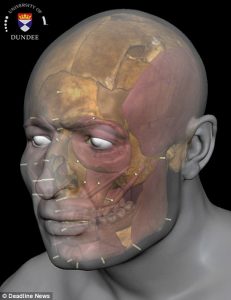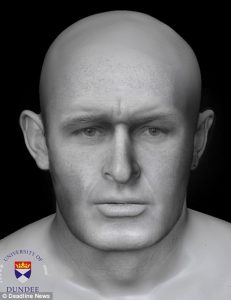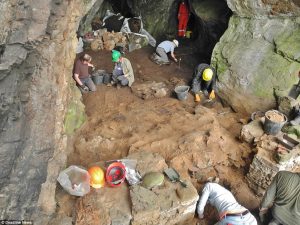Face of a murdered 1400 years ago Pictish man, who was found in a cave in the Black Isle, Scotland, has been digitally reconstructed.

The skeleton was found in a well-preserved condition, buried in a recess of the cave. The body had been placed in an unusual cross-legged position, with large stones holding down his legs and arms. The individual had suffered at least five blows that resulted in fracturing to his face and skull, allowing forensic anthropologists to compile a detailed account of how the man’s short life was brought to this brutal end.


The skeleton was discovered when a team of volunteers were digging to determine when the cave might have been occupied. Below substantial layers relating to cave-use since the turn of the 20th century, archaeologists found evidence that the cave had been used for iron-smithing during the Pictish period. A bone sample sent for radiocarbon dating found he died sometime between 430 and 630 A.D., commonly referred to as the Pictish period in Scotland. The anthropologists also conducted a digital reconstruction of the man. According to them he had long wavy hair with a thick Viking beard and mild blotches around his face.

The scientists identified five injuries which allowed to reconstruct the death of the man. According to them the first impact was by a circular cross-section implement that broke his teeth on the right side. The second may have been the same implement, used like a fighting stick which broke his jaw on the left. The third resulted in fracturing to the back of his head as he fell from the blow to his jaw with a tremendous force possibly onto a hard object perhaps stone. The fourth impact was intended to end his life as probably the same weapon was driven through his skull from one side and out the other as he lay on the ground. The fifth was not in keeping with the injuries caused in the other four, where a hole, larger than that caused by the previous weapon, was made in the top of the skull.

(after University of Dundee, Rosemarkie Caves Project, BBC News & Daily Mail Online)